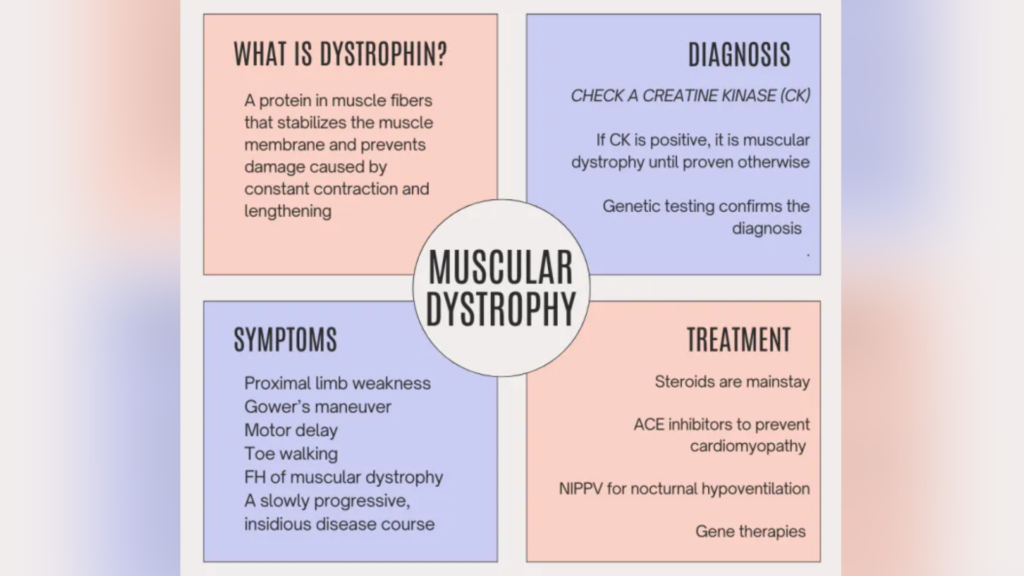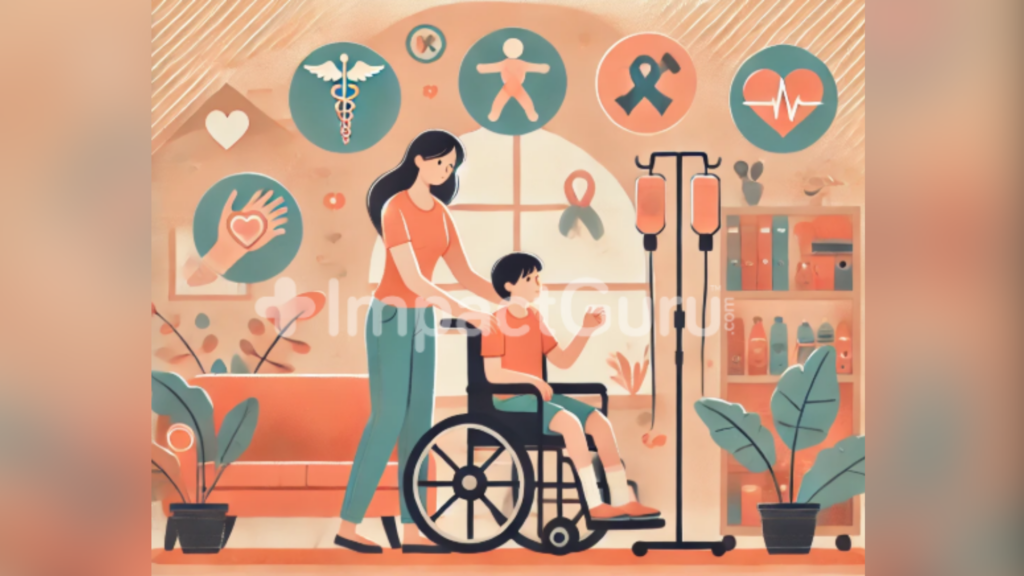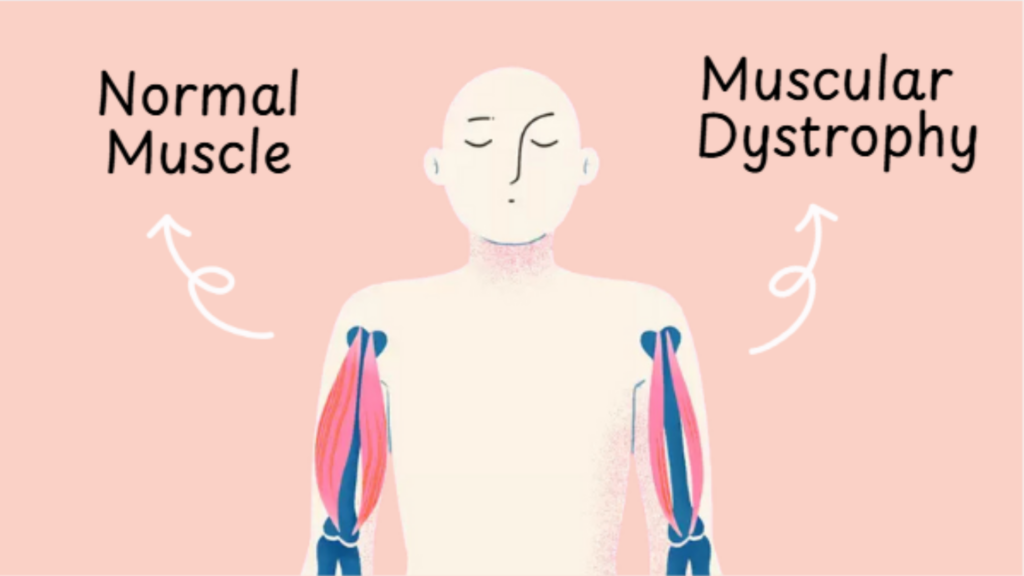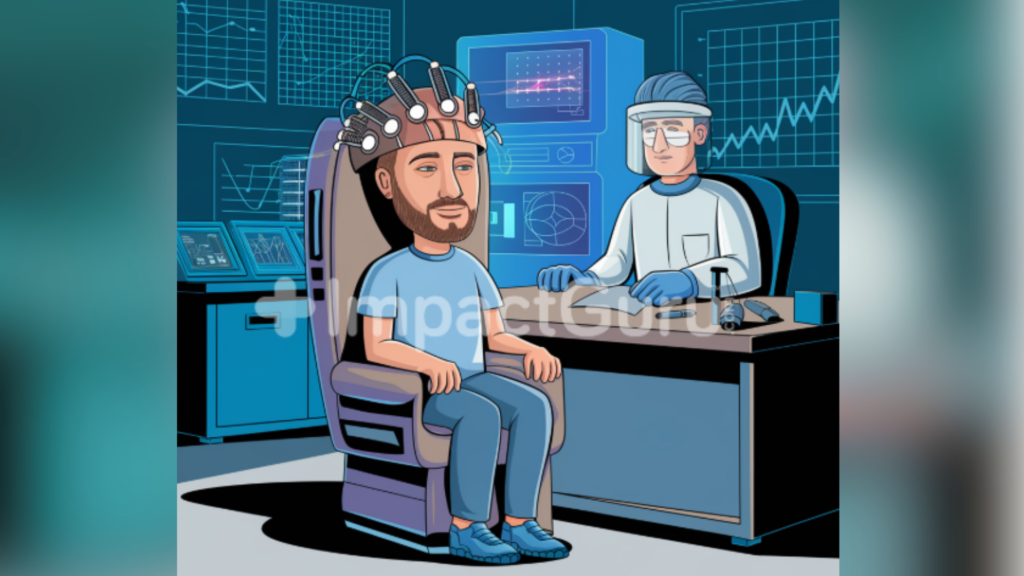Who knows the mixture of joy and anxiety of welcoming a new baby into the world, but parents! Imagine how parents worry when they watch their child struggle with simple activities like climbing stairs or standing up. Sometimes they are just milestone delays. At other times these subtle signs hide a big and fatal condition- Duchenne Muscular Dystrophy (DMD).
Duchenne Muscular Dystrophy is the most common form of muscular dystrophy, affecting thousands of male children worldwide. It primarily impacts boys as the problem appears in the X-chromosomes inherited from the mother.
Table of Contents
- Early Signs of DMD
- What is Muscular Dystrophy?
- Challenges: Treatment for Duchenne Muscular Dystrophy (DMD) in India
- Are You Supporting Your Children the Right Way?
- Cost of Treatment: India versus the World
- Access & Affordability
- Current Scenario in India
- Ayurveda & DMD
- Indian Government Initiatives – Treatment in India for 2024-25
- Localized Therapies and Innovations
- DMD: Challenges in India
- Future of Duchenne Muscular Dystrophy in India in 2025
- What’s in store for the Duchenne Boys
Early Signs of DMD
Children with DMD often show signs early or red flags like:
- Delayed walking
- Unusually big calves as toddlers
- Struggle with physical activities in toddlers
The root cause is the mutation of dystrophin, a protein vital for muscle function. Without enough dystrophin, muscles weaken over time, making everyday movements more challenging and eventually affecting overall quality of life.
There isn’t a 100% cure for DMD as it is a genetic condition, but advancements in treatment and research bring hope. If your child or someone close to you has DMD, understanding the condition is the first step toward managing it.
What is Muscular Dystrophy?
Muscular dystrophy isn’t just one disease; it’s a group of genetic conditions. Duchenne Muscular Dystrophy (DMD) and Becker Muscular Dystrophy (BMD) are the most common in children. Both are caused by mutations in dystrophin, which is located in the X chromosome.
Duchenne Muscular Dystrophy (DMD) is more rare and severe. It affects about 1 in 5,000 males worldwide. Though both boys and girls may inherit a mutated copy of dystrophin from their mother (X chromosome), only boys suffer from dystrophy in the muscles. Girls become the carriers of Duchenne Muscular Dystrophy for the coming generations. On the other hand, Becker Muscular Dystrophy (BMD) tends to be milder and appears later in life.

Gene Therapy and Exon-Skipping: A Glimmer of Hope
One of the most promising developments in treating Duchenne Muscular Dystrophy is the application of gene therapy. A key approach is exon-skipping therapy, which helps bypass specific genetic mutations to restore some dystrophin production. For instance, therapies targeting exon deletions (like exon 51 or 22-41) have shown potential benefits.
But let’s be real—gene therapy is expensive across the globe. Costs can range from lakhs to even crores in India. As the treatment for Duchenne Muscular Dystrophy is relatively new, with the first exon-skipping drug, Exondys 51 getting an FDA approval in 2016, the access to medical experts is also limited, with only a handful of centres offering expert treatments.
Practical ways to manage DMD better:
- Consult a genetic specialist- This will help you understand the exact mutation and explore therapy options for your child.
- Look into clinical trials– With continuous research and medical inventions, it is always good to keep an open eye on experimental treatments and medical breakthroughs.
- Connect with global organizations- Seek support from global support groups and NGOs for financial aid to afford expensive treatment options for Duchenne Muscular Dystrophy.
- Crowdfund- A reputed online crowdfunding platform like ImpactGuru.com supports multiple patients with Duchenne Muscular Dystrophy. The 30+ lakh donor base of ImpactGuru.com will give you the strength to manage the rare condition of your child better. So, start fundraising today!
Challenges: Treatment for Duchenne Muscular Dystrophy (DMD) in India
India has made progress in DMD research, but there’s still a long way to go. Advanced therapies like exon-skipping and gene editing are available. These types of treatment require specialized training. Therefore, the main challenges are:
- The newness of the available treatment
- The high cost of the drugs
- The lack of a sufficient number of health experts
On the bright side, Indian researchers and hospitals such as AIIMS (All India Institute of Medical Sciences) New Delhi, and Manipal Hospitals Bengaluru, are working toward cost-effective solutions. With in-house gene therapy drugs and more experts trained to handle Duchenne Muscular Dystrophy, the future of Duchenne boys will certainly be safe. Many support groups are also advocating for healthcare policies to reduce the financial burden on families by providing the best DMD treatment in India.
Are You Supporting Your Children the Right Way?
Learning your child has Duchenne Muscular Dystrophy can be overwhelming. It’s natural to wonder, “Am I doing enough?” The journey is challenging, but you’re not alone.

Here are a few ways to support your child and navigate this journey:
- Educate Yourself
Understanding how Duchenne Muscular Dystrophy affects your child’s body can make a big difference. Knowing why there is a delay in development milestones and why climbing stairs is tough for the kid, helps you prioritize and plan better care.
- Build a Support System
Lean on family, friends, doctors, therapists, and support groups. Duchenne Muscular Dystrophy impacts the entire family, so don’t hesitate to ask for help when you need it, emotional or financial.
- Work with Healthcare Providers
A multidisciplinary team—including neurologists, physical therapists, and cardiologists—can guide you through treatments and therapies. Stretching exercises, mobility aids, or even small home adjustments can make daily life easier for your child.
- Focus on Emotional Support
Celebrate small victories. Please encourage your child to explore their interests, no matter how small. Make room for joy in your daily routine—through games, storytelling, or simply spending time together.

Cost of Treatment: India versus the World
Globally, advanced treatments like gene therapy cost millions of dollars.
The medical expenses for Duchenne Muscular Dystrophy vary significantly across countries, influenced by healthcare systems, availability of therapies, and insurance coverage. It is important to note that the cost of the only 1-time gene therapy drug, Elevidys, is $3.2 million.
While insurance may cover a portion of these expenses, out-of-pocket costs can still be significant for families. Let’s look at the challenges of families across the world in procuring the drug:
Treatment Cost: United States
In the U.S. this advanced treatment comes with substantial costs. Elevidys, the $3.2 million gene therapy drug is approved by the FDA for DMD patients aged four and over.
According to the US Bureau of Labour Statistics, the average annual income in the country is about $60,000 (median). Thus for an average American parent, it will take about 53 years to get their Duchenne child Elevidys.
Treatment Cost: Europe
European countries such as Germany, Italy, and the United Kingdom offer treatment for Duchenne Muscular Dystrophy through their public healthcare systems. The amounts may look considerably reasonable, however, they are between 7-16 times higher than the per capita health expenses (mean) for these countries in Europe.
Elevydis, on the other hand, would cost around 2.5 million Euros and it would take a family about 62.5 years to get the drug, considering their average annual income is 40,000 pounds in the United Kingdom.
And for the other European countries, if the average income is £37,900, the pricing and the time it will take for 1 family to arrange for the drug is 79 years.
Treatment Cost: Brazil
In Brazil, a study reported a median annual cost per Duchenne patient of R$17,121, with home care expenditures accounting for a significant portion.
While public healthcare services are available, the high cost of Eleyvidis is R$19,826,880.00.
An average family in Brazil with an average annual income of R$48000 will take 415 years to get the drug.
Treatment Cost: India
For the Indians, if the average income is ₹ 200,000, the pricing and the time it will take for 1 family to arrange for the drug is 1000 years.
In India, the cost of gene therapy is expensive and remains unaffordable for most Indian families, highlighting the expenses associated with rare disease treatments. Using crowdfunding platforms like ImpactGuru.com, parents have raised and begun treatment for their children. You can too!
Access & Affordability
Globally, the high cost of treatment for Duchenne Muscular Dystrophy poses significant challenges to access and affordability.
India’s approach to managing Duchenne Muscular Dystrophy (DMD) reflects both challenges and opportunities. While global advancements in gene therapy and other innovative treatments bring promise, accessibility and affordability in India remain significant barriers.
Current Scenario in India
Indian researchers have made strides in localized treatment options for Duchenne Muscular Dystrophy. For example:
In 2023, a 10-year-old boy from Bengaluru became the first Indian patient to receive exon-skipping gene therapy developed domestically. This therapy, administered at Narayana Health City, marks a milestone in making advanced treatment more affordable and accessible. (Source: The Hindu)
The therapy, costing around ₹40-50 lakh, is significantly less expensive than its global counterparts, underscoring the potential for local innovations to reduce costs.
India is known for its Ayurveda, which has added value to our lives for generations. Let’s explore if there is any DMD treatment in Ayurveda.
Ayurveda & DMD
In Ayurveda, DMD can be associated with Mamsa Kshaya (degeneration of muscle tissue) and is linked to an imbalance in Vata dosha, which governs movement and neurological functions in the body. DMD Treatment in Ayurveda focuses on nourishing the muscles, strengthening the body, and balancing doshas.
While Ayurveda can provide supportive care, it is not a cure for DMD. It is best used as a complementary therapy to improve quality of life, reduce complications, and manage symptoms alongside conventional treatments.
Indian Government Initiatives – Treatment in India for 2024-25
- Rare Disease Policy
The Indian government launched the National Policy for Rare Diseases (NPRD) in 2021. The policy aims to improve diagnosis, treatment, and financial support for patients with rare diseases, including Duchenne Muscular Dystrophy. Key provisions include:- Financial aid of up to ₹50 lakh under the Rashtriya Arogya Nidhi (RAN) for diseases requiring one-time curative treatments.
- Creation of eight Centres of Excellence (CoE) for rare disease management, including the best hospitals for DMD like AIIMS, Delhi, and SGPGI, Lucknow.
- Challenges in Implementation
- Despite the policy, the funding is often insufficient, given the exorbitant costs of treatments like gene therapy.
- Many families face delays in receiving financial aid due to bureaucratic hurdles.

Localized Therapies and Innovations
Indian pharmaceutical and biotech sectors are exploring solutions to address the high cost of DMD treatments in India:
- Exon-Skipping Therapy
Developed by Indian researchers, exon-skipping therapies aim to bypass faulty genes responsible for DMD. This therapy is not a cure but can slow the disease’s progression. - Steroids and DMD Support
Corticosteroids, such as deflazacort, are commonly used in India to manage DMD symptoms. While affordable, these do not halt disease progression and are often combined with physiotherapy for DMD patients and supportive care. - Clinical Trials
- Indian institutions are increasingly participating in global clinical trials for advanced DMD therapies.
- Partnerships between Indian biotech firms and global companies could improve access to cutting-edge treatments.
DMD: Challenges in India
Lack of Awareness and Diagnosis
Many DMD cases go undiagnosed due to limited awareness among healthcare professionals and the general public.
Economic Burden on Families
- The out-of-pocket expenditure for the DMD treatment in India is crippling for middle- and lower-income families.
- Crowdfunding platforms like ImpactGuru are often the only recourse for families to afford treatment. Many patients who funded on the crowdfunding platform have started treatment and have shown great improvement.
Infrastructure Gaps
While many things are work in progress, many patients from rural areas lack access to specialised healthcare facilities.

Future of Duchenne Muscular Dystrophy in India in 2025
- Policy Reforms
The government must expand its financial support under the NPRD to cover recurring treatment costs for chronic conditions like Duchenne Muscular Dystrophy. - Focus on Research
Continued investment in R&D for gene therapy and affordable alternatives is crucial. Collaborations between Indian biotech firms and international research institutions can accelerate progress for DMD treatment in India 2024-25. - Public-Private Partnerships
Partnering with private firms could subsidise the cost of advanced treatments and improve access.
What’s in store for the Duchenne Boys
The future for children with Duchenne Muscular Dystrophy (DMD) has never been more hopeful. Groundbreaking research is paving the way for advanced therapy, innovative gene treatment, and improved supportive care. Each scientific breakthrough brings us closer to transforming DMD from a life-limiting diagnosis to a manageable condition, giving our children the chance to thrive.
But there’s more we can all do together. Fundraising for Duchenne Muscular Dystrophy is one of the most impactful ways to accelerate progress. And where do you do that? ImpactGuru. Every donation fuels research, helps families afford costly treatment options and supports the development of life-changing medical care.
Remember, every story you share, every rupee you raise, and every action you take is a step toward brighter days for children with Duchenne Muscular Dystrophy. Let’s keep the momentum going, one step—and one breakthrough—at a time. Together, we can turn hope into reality and build a future full of possibilities for children.
Sources:













